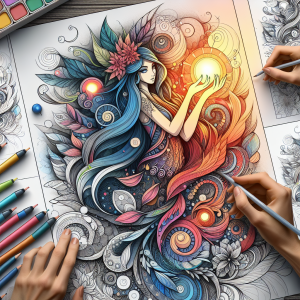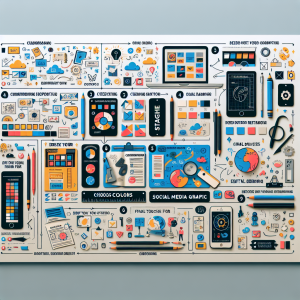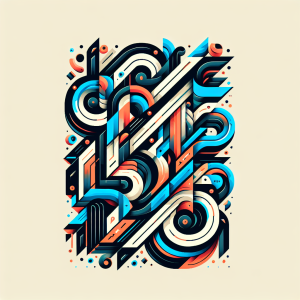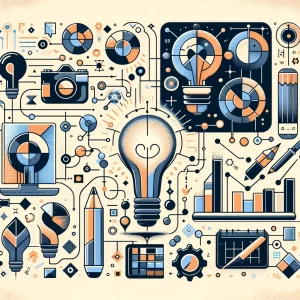

Understanding the Concept
Every great illustration begins not with a brush or a stylus, but with an idea. Whether inspired by an emotional moment, a whimsical notion, or a commissioned topic, the concept of your illustration is the foundation upon which all else is built. Forming a clear understanding of your concept is an essential starting point for any creative process.
Developing a concept often involves research or brainstorming. For example, if your project has a specific theme or subject, take the time to familiarize yourself with it thoroughly. Is your picture intended to tell a story, evoke an emotion, or illustrate a particular point of view? Answering these questions during the conceptual stage will provide a solid direction for your illustration effort.

Getting Your Tools Ready
Different artists favor different tools, depending on their preferred style and process. Traditional artists may need paper or canvas, pens or brushes, and paints or charcoals. On the opposite end, digital artists require software such as Adobe Photoshop or Illustrator and hardware such as a drawing tablet.
Aside from these physical or digital supplies, it’s also essential to organize your workspace. A clutter-free physical or virtual desk can bolster efficiency and reduce distractions during your creative sessions.
From Sketch to Illustration
Once your concept is clear and your tools are prepped, it’s time to start sketching. Start with simple line work to define the composition and subjects of your illustration, while also considering perspective. While progress from rough drafts to the final design, incorporate color schemes and shading to give your piece more visual depth and appeal.
Remember, much of creative work comes from experimentation and iteration, so don’t be discouraged if perfecting an illustration requires several drafts. Each effort will take you one step closer to your final, polished piece.
Finalizing and Refining
Your illustration will start to look complete once the major elements are in place, but the true artistry lies in the details. Spend time refining your work, adding intricate detail and smoothing out rough or awkward sections. Look at your work from different angles and ask for a second opinion to spot areas that may need improvement.
Finally, remember your intended platform before finalizing your piece. If it’s going on social media, render the picture in the appropriate dimensions. If it’s for print, make sure it meets the necessary resolution standards.

Showcasing and Feedback
The final step is to share your work with the world. Whether it’s a personal project or a professional one, showcasing your work can introduce you to diverse perspectives and insight into how your pieces resonate with different audiences.
Accept criticism graciously, as feedback—the good and bad—can be a beneficial tool for growth. Let your art stimulate discussion, and use the responses you get to guide your future efforts.
In conclusion, creative illustration is a rewarding process that builds on foundational skills to express enchanting visuals and narratives. Hopefully, this tutorial can assist you in developing your style and perfecting your artistic process. Enjoy the journey of illustrating your concepts into completion!







